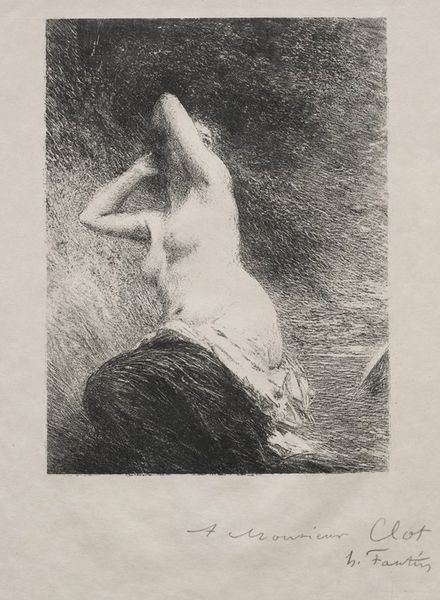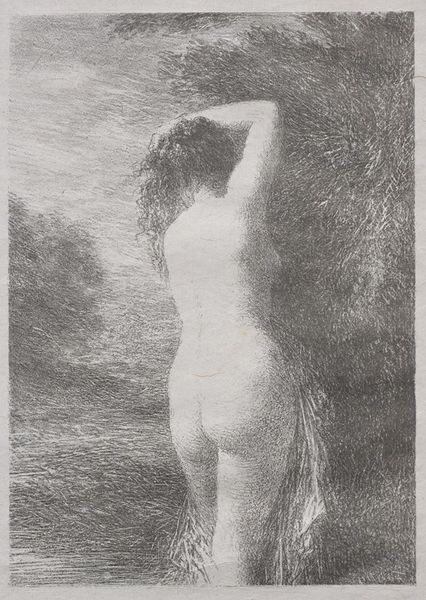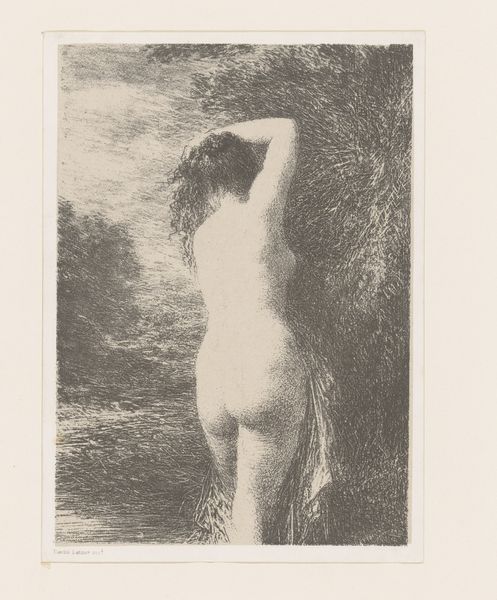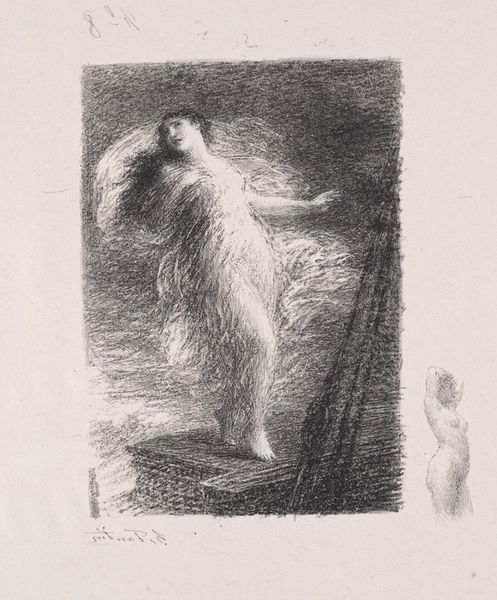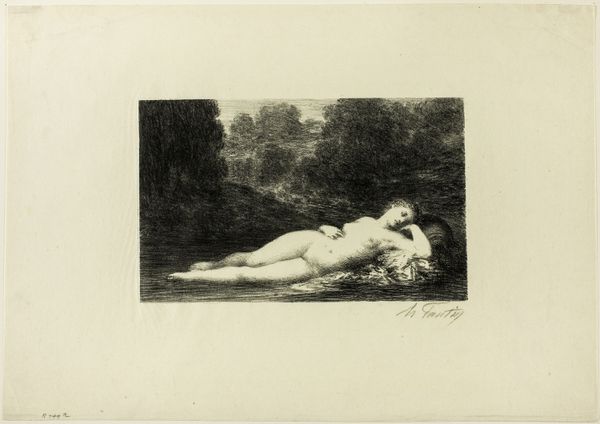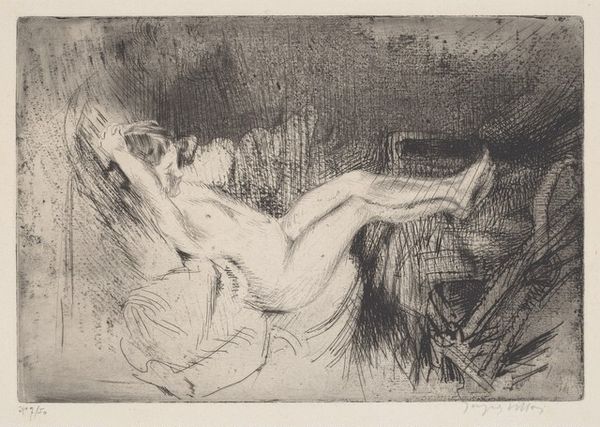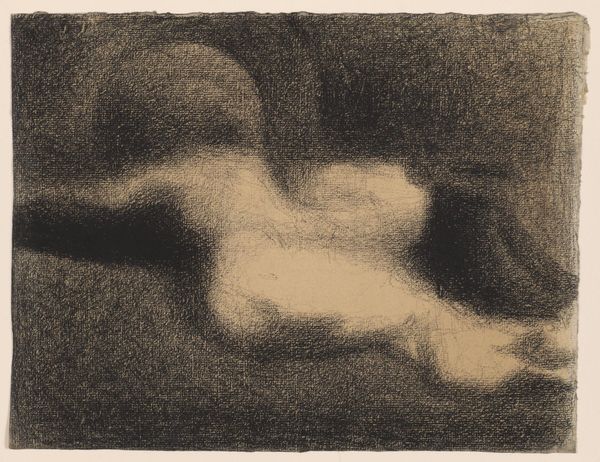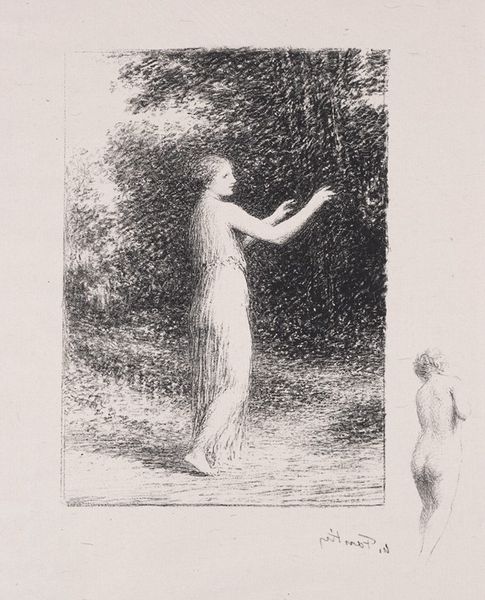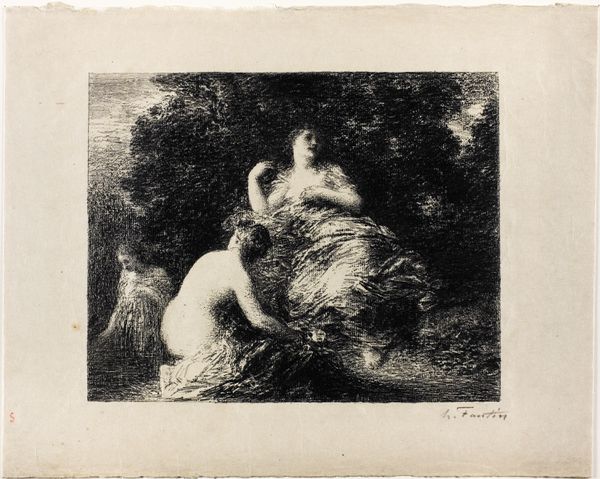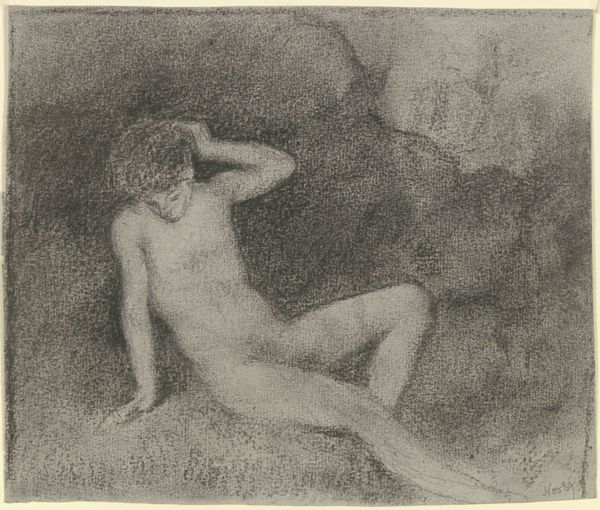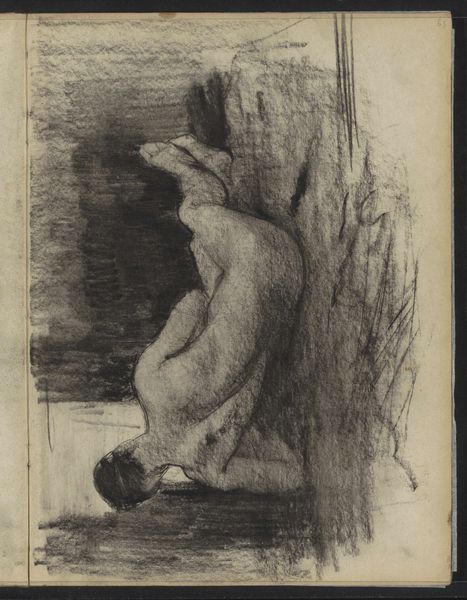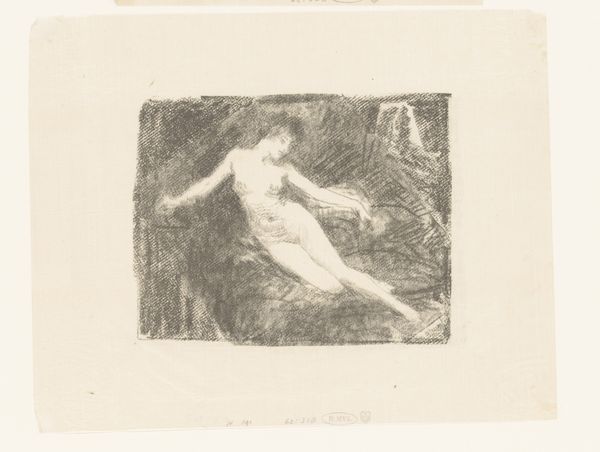
Copyright: Public Domain: Artvee
Editor: Fantin-Latour's "Rêverie," created in 1903 using pencil and charcoal, presents a reclining nude figure amidst a softly rendered landscape. The tonal range is captivating, giving a dreamy and almost ethereal quality to the work. How does its placement within the broader artistic trends of its time influence your interpretation? Curator: It's interesting to view "Rêverie" against the socio-political backdrop of early 20th century France. Fantin-Latour, while associated with Impressionism, largely remained independent, clinging to Romantic ideals. How do you think the then-burgeoning avant-garde movements—like Fauvism and early Cubism—might have influenced his stylistic choices, even subconsciously, towards this dreamy escapism? Is it a reaction against industrialization? Editor: That's a compelling point. Perhaps the emphasis on idealized form and the return to nature are a subtle resistance to the rapidly changing world? Considering that many artists began using art as a form of activism or to simply reject historical context, what kind of narrative do you think Fantin-Latour could be expressing by romanticizing historical values and idealism? Curator: The composition, which deliberately positions the figure within an almost theatrical backdrop of foliage, is vital. This staging encourages us to view the nude not just as a representation of beauty, but also as a carefully constructed image for public consumption. Can you imagine this image sparking discussion amongst critics and audiences then, and perhaps today, around themes like objectification and the male gaze? Editor: Definitely. Looking at the figure's relaxed posture and the title "Rêverie," I initially perceived a sense of serene introspection. But viewing it as an image carefully constructed for public viewing, through a socio-political lens, it raises crucial questions about the power dynamics at play. Curator: Exactly. The piece becomes a historical document reflecting how the female form was idealized and presented within the visual culture of the period, provoking conversations on female agency and historical expectations that continue to shape discussions today. It also underscores art's powerful role in subtly reinforcing prevailing societal norms or questioning them. Editor: This has really transformed how I see this artwork. It’s no longer just a beautiful drawing, but a complex statement about art's relationship with society and culture at a given time. Curator: Precisely. The socio-political approach enriches our engagement with art, unlocking insights that may not be apparent at first glance, enabling a more critical and holistic evaluation.
Comments
No comments
Be the first to comment and join the conversation on the ultimate creative platform.
